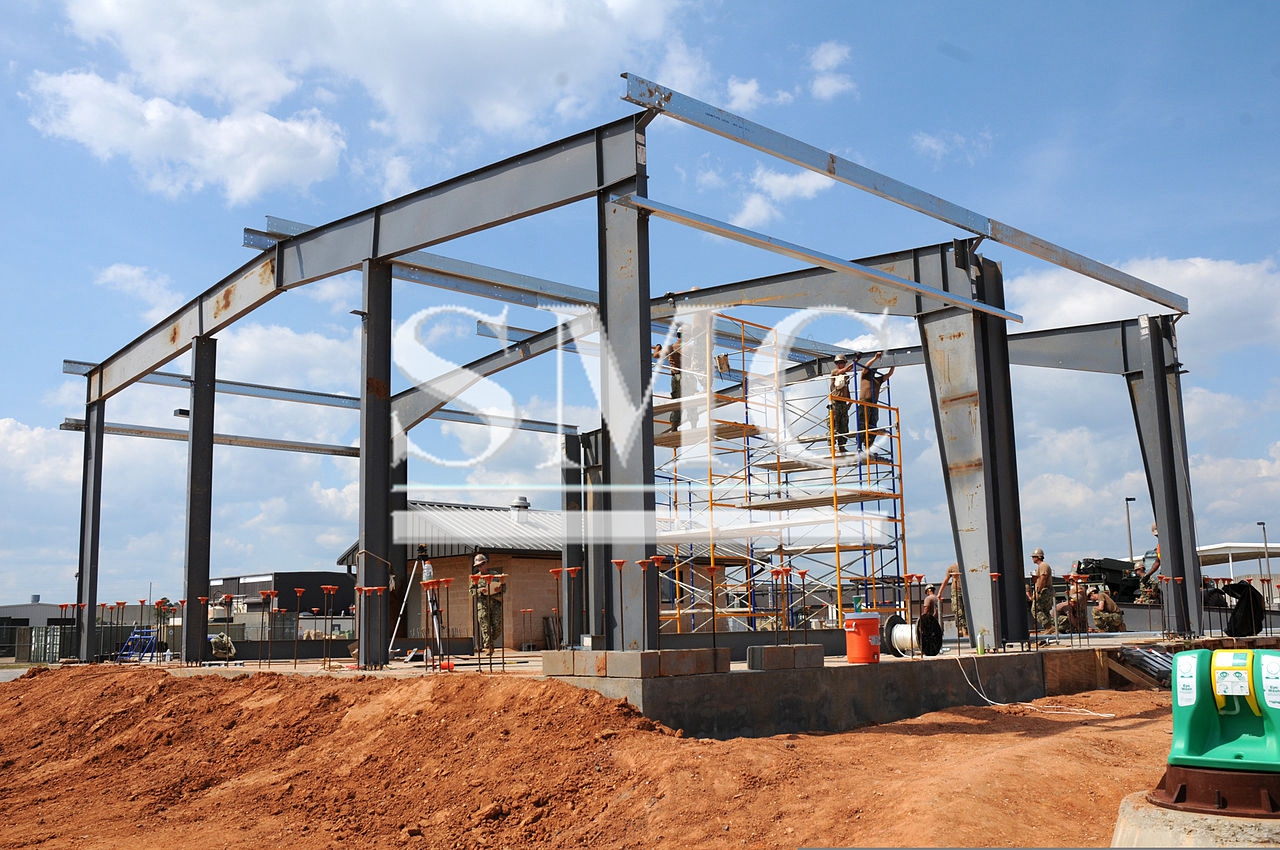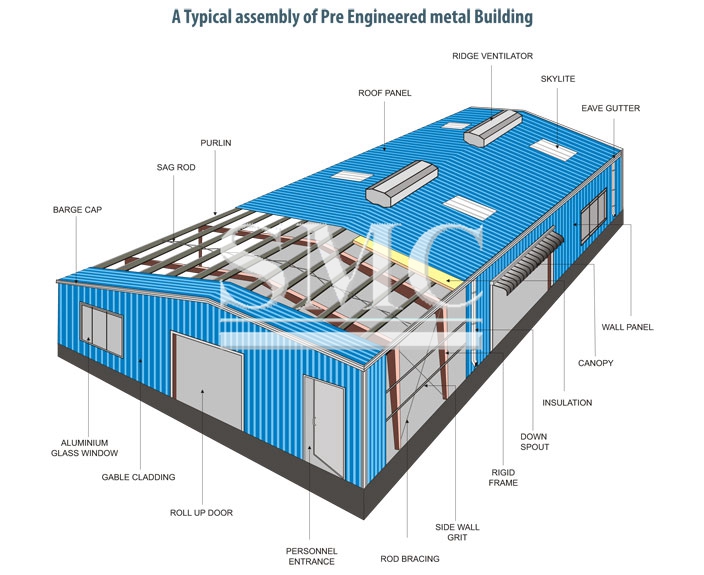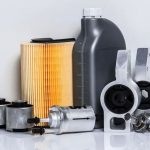Pre engineered buildings are factory-built buildings of steel that are shipped to site and bolted together. What distinguishes them from other buildings is that the contractor also designs the building – a practice called design & build. This style of construction is ideally suited to industrial buildings and warehouses; it is cheap, very fast to erect, and can also be dismantled and moved to another site – more on that later. These structures are sometimes called ‘metal boxes’ or ‘tin sheds’ by laymen – they are essentially rectangular boxes enclosed in a skin of corrugated metal sheeting.
Great speed is achieved because while the foundations and floor slab are being constructed, the beams and columns – the structural system – are being fabricated in the factory. Once the foundations and floor are done, the columns are shipped to the site, lifted into place by cranes, and bolted together.

Structural systems
The structural system of pre-engineered steel buildings gives it its speed and flexibility. This system consists of factory-fabricated and factory-painted steel column and beam segments that are simply bolted together at site. The columns and beams are custom-fabricated I-section members that have an end plate with holes for bolting at both ends. These are made by cutting steel plates of the desired thickness, and welding them together to make I sections. The cutting and welding is done by industrial robots for speed and accuracy; operators will simply feed a CAD drawing of the beams into the machines, and they do the rest. This production line style of work makes for great speed and consistency in fabrication. The shape of the beams can be tailored to optimum structural efficiency: they are deeper where the forces are greater, and shallow where they are not. This is one form of construction in which the structures are designed to carry exactly the loads envisioned, and no more.
Erection
Each piece of the system is very much alike – an I section with end plates for bolting. The painted steel sections are lifted into place by crane, and then bolted together by construction workers who have climbed to the appropriate position. In large buildings, construction can start with two cranes working inwards from both ends; as they come together, one crane is removed and the other finishes the job. Usually, each connection calls for six to twenty bolts to be installed. Bolts are to be tightened to exactly the right amount of torque using a torque wrench.
Foundations and floor slab
The foundations for pre engineered metal buildings are made with conventional concrete systems, usually open foundations. Since these structures are usually quite large, they attract a fair amount of wind forces. Wind can cause a net upwards force on a building, called uplift. Since these structures are very light (they can weigh as little as 50 kg per square meter, excluding the foundations and floor slab), the foundations are designed to firmly anchor the structures to the ground, preventing them from being blown away by the wind. The floor system for industrial and storage buildings is usually a thick (about 8″ to 12″ / 200 to 300mm) concrete grade slab that rests directly on the prepared earth beneath it. The concrete can be topped with a thin, abrasion resistant smooth coating called an epoxy floor or polyurethane floor if desired.
Cladding and roofing
The most economical cladding for these structures is light corrugated metal sheeting, on both the roof and the external walls. These steel sheets, barely 0.5mm thick, are coated with an aluminum-zinc alloy for corrosion protection on both sides, and are given an attractive, durable paint finish on the outside in the factory. These sheets are introduced over a network of purlins, a steel part that lays on the fundamental basic edge and backings the roofing material. In pre-built structures, icy framed Z segments are the individual from decision for purlins.
Before installing the sheets, contractors will install layers of insulation and vapor barriers. Rolls of glass wool or mineral wool are the most common type of insulation for such buildings. Since there is no inner wall over which to fix these layers, a layer of galvanized chicken wire mesh is first laid over the purlins. Over this, the insulation and vapor barriers are laid, and then the corrugated sheets are laid. The sheets are fixed with self tapping screws that run through the sheets and layers of insulation directly into the purlins. The purlins, chicken mesh and insulation are thus visible from below, and can be left as such or covered with a false ceiling. Polycarbonate skylights can be installed in the roof sheeting to create natural lighting.
It is common for industrial buildings to have a masonry wall upto a height of 10 or 15 feet (3 to 5m). This allows doors and windows to be easily fitted, and provides security. This wall can be built behind the metal sheeting, making it invisible from the outside.

Shanghai Metal Corporation is a trusted aluminum alloy, aluminum foil price, stainless steel price and stainless steel manufacturer, kinds of stainless steel in china.
Guest contributors are welcome at the Alloy Wiki.It is a weekly wiki and guide on alloy information and processing technology, while also about the vast array of opportunities that are present in manufacturing. Our team of writers consists of a Machining Material Supplier / Machinist / Tool and Die Maker, a Biomedical Engineer / Product Development Engineer, a Job Development Coordinator / Adjunct Professor, and a President and CEO of a manufacturing facility.
Link to this article:Pre engineered buildings are factory-built buildings of steel
Reprint Statement: If there are no special instructions, all articles on this site are original. Please indicate the source for reprinting:Alloy Wiki,thanks!^^


